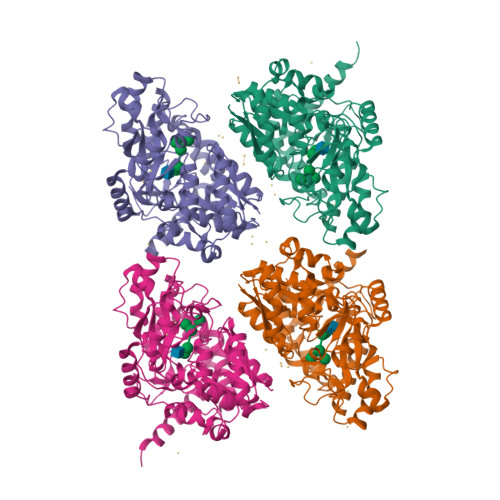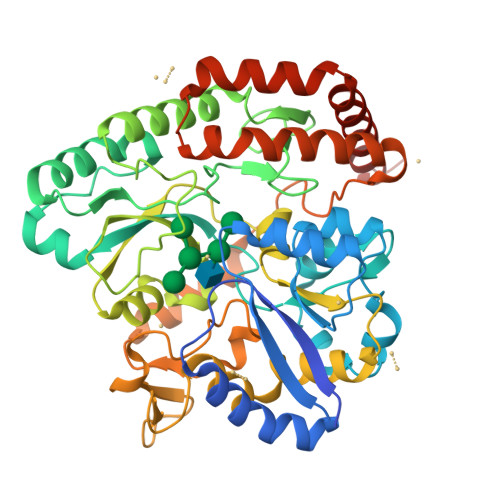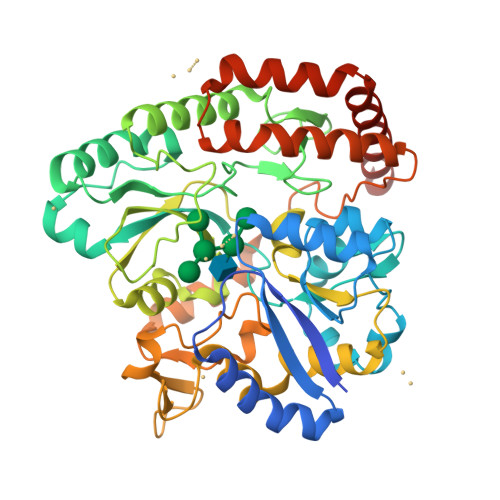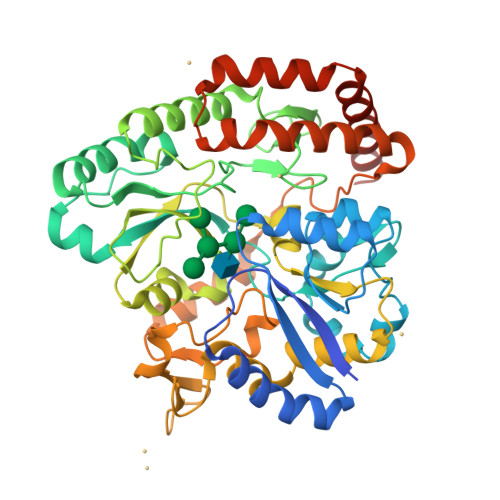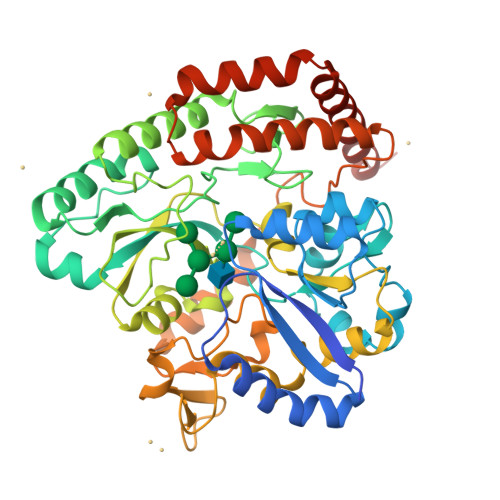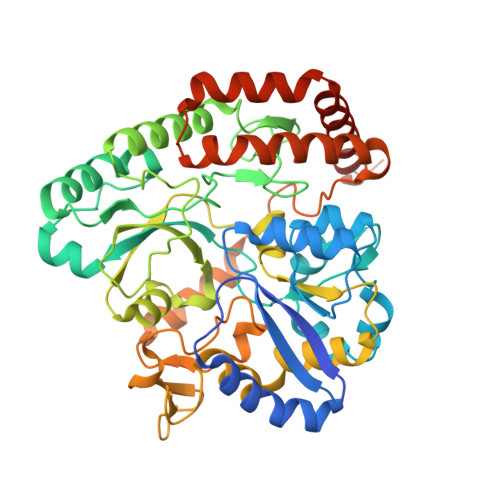Molecular Characterization of N-glycan Degradation and Transport in Streptococcus pneumoniae and Its Contribution to Virulence.
Robb, M., Hobbs, J.K., Woodiga, S.A., Shapiro-Ward, S., Suits, M.D., McGregor, N., Brumer, H., Yesilkaya, H., King, S.J., Boraston, A.B.(2017) PLoS Pathog 13: e1006090-e1006090
- PubMed: 28056108
- DOI: https://doi.org/10.1371/journal.ppat.1006090
- Primary Citation of Related Structures:
5SUO, 5SWA, 5SWB, 5SWI - PubMed Abstract:
The carbohydrate-rich coating of human tissues and cells provide a first point of contact for colonizing and invading bacteria. Commensurate with N-glycosylation being an abundant form of protein glycosylation that has critical functional roles in the host, some host-adapted bacteria possess the machinery to process N-linked glycans. The human pathogen Streptococcus pneumoniae depolymerizes complex N-glycans with enzymes that sequentially trim a complex N-glycan down to the Man3GlcNAc2 core prior to the release of the glycan from the protein by endo-β-N-acetylglucosaminidase (EndoD), which cleaves between the two GlcNAc residues. Here we examine the capacity of S. pneumoniae to process high-mannose N-glycans and transport the products. Through biochemical and structural analyses we demonstrate that S. pneumoniae also possesses an α-(1,2)-mannosidase (SpGH92). This enzyme has the ability to trim the terminal α-(1,2)-linked mannose residues of high-mannose N-glycans to generate Man5GlcNAc2. Through this activity SpGH92 is able to produce a substrate for EndoD, which is not active on high-mannose glycans with α-(1,2)-linked mannose residues. Binding studies and X-ray crystallography show that NgtS, the solute binding protein of an ABC transporter (ABCNG), is able to bind Man5GlcNAc, a product of EndoD activity, with high affinity. Finally, we evaluated the contribution of EndoD and ABCNG to growth of S. pneumoniae on a model N-glycosylated glycoprotein, and the contribution of these enzymes and SpGH92 to virulence in a mouse model. We found that both EndoD and ABCNG contribute to growth of S. pneumoniae, but that only SpGH92 and EndoD contribute to virulence. Therefore, N-glycan processing, but not transport of the released glycan, is required for full virulence in S. pneumoniae. To conclude, we synthesize our findings into a model of N-glycan processing by S. pneumoniae in which both complex and high-mannose N-glycans are targeted, and in which the two arms of this degradation pathway converge at ABCNG.
Organizational Affiliation:
Department of Biochemistry and Microbiology, University of Victoria, Victoria, British Columbia, Canada.








